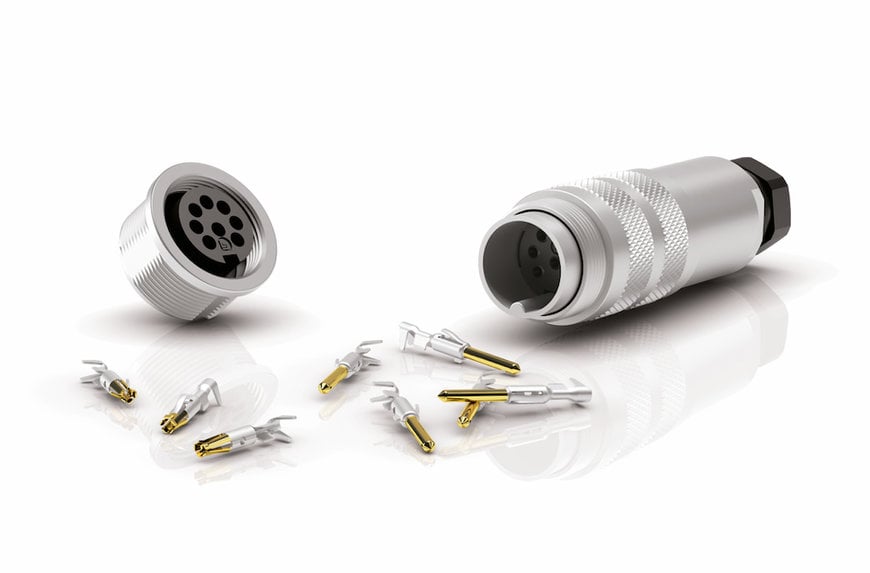www.magazine-industry-usa.com
23
'22
Written on Modified on
Binder: Assemble more efficiently
Crimp variants of the M16 product series from binder simplify wiring, in small quantities on site, but also automated and in larger batches. From the connector itself through the contacts to the suitable crimping tool, everything necessary is available from a single source at binder.

Binder, a leading supplier of industrial circular connectors, offers its M16-size products, such as the 423 series, for crimp termination. The crimping technology enables users to quickly and easily wire the connectors on site. It is also characterized by its mechanical robustness, corrosion proofness, and advantageous electrical properties of the connection. However, in order to exploit the potential of this termination technique, a defined process and standard-compliant test methods are required.
Technical background: crimp termination
Connecting contacts and wires, as well as insulation, by means of crimp technology is considered to be particularly simple and time-saving. On the other hand, the reliable and robust method has established itself in industrial applications that require vibration-resistant and tension-proof connections. It is considered to be very well reproducible and is characterized by excellent conductivity, provided that the crimp contact, wire, and tool are perfectly matched.
In the crimping process, the stripped conductor is guided into a dedicated area of the crimp contact, the so-called crimp barrel, and pressed in by means of a tool. This creates a non-detachable connection which ideally – if crimped the proper way – features low contact resistance and gas tightness, thus fulfilling requirements for corrosion protection.
The mechanical quality of a crimped connection is determined by its tensile strength or crimp extraction force. Measurements of crimp height and extraction force are usually used for production monitoring. The quality of the electrical connection can be assessed on the basis of its electrical conductivity. Requirements and test methods for the crimp connection are subject to the DIN EN 60352-2 standard.
Crimp contacts and tools are available for both manual and machine processing. For crimping by hand, contacts can be used as single or strip goods; for the latter, particular crimping tools are required. In addition to the connectors, binder also offers the accessories required, including tools, from a single source.
423 series – for industry and beyond
M16 connectors with crimp termination meet the growing industry-wide demand for modular connectivity regarding signals, data and electrical power. Thanks to their specific properties, such as tensile strength and conductivity, but also due to process-related advantages, such as time-saving and easy processability, they are used not only in industrial applications, but also, for example, in the installation and replacement of gas meters or in railroad technology.
M16 connectors for crimp termination of the binder 423 series are specified for rated voltages from 32 V to 150 V at 5 A or 6 A, depending on the number of pins. 2- to 8-pin versions are available. Depending on the contact surface (silver or gold), they achieve a mechanical lifetime of at least 500 or 1000 mating cycles, respectively. The products are equipped with screw locking and are designed for industrial environments according to protection degree IP67. In addition to crimp, solder and screw clamp versions of the M16 size are also available from binder, as well as wired versions, and overmolded cables.
www.binder-connector.com

